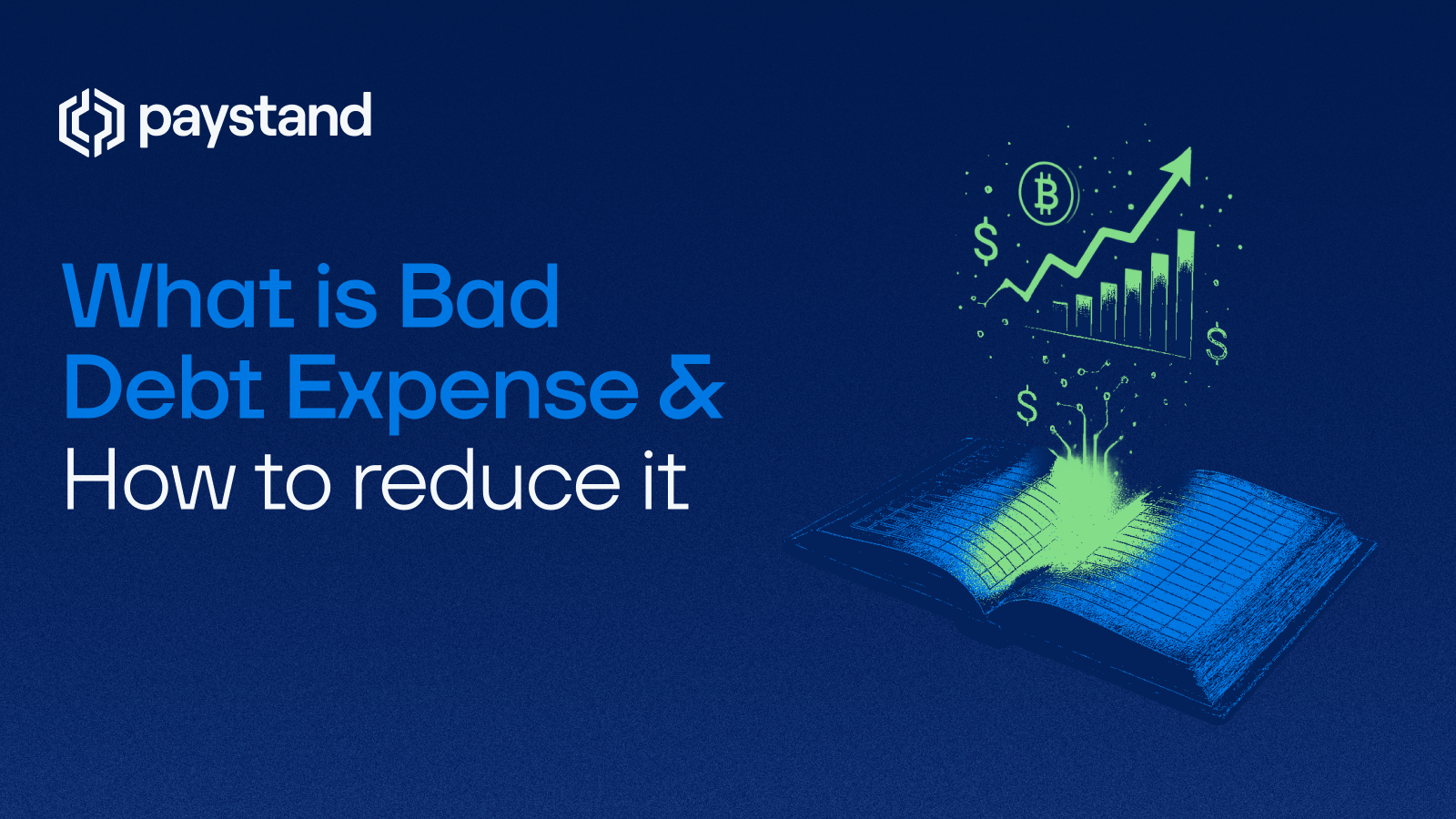What is Bad Debt Expense and How to Reduce It

Table of Contents
- What is Bad Debt Expense?
- Why Do Bad Debts Happen?
- How to Record Bad Debt Expense
- How to Estimate Bad Debt Expense
- How Can Businesses Reduce Bad Debt Expense with Professional Accounting Solutions?
- Best Services or Software for Managing Bad Debt Expense
- Comparing the Top Accounting Software Options
- Tools for Calculating and Reporting Bad Debt Expense
- How AR Automation Helps Businesses
Key Takeaways
- Bad debt expense reflects losses from uncollectible accounts when customers default on payments.
- It impacts both the income statement (net income) and the balance sheet (via a contra asset account).
- Businesses record bad debt using the direct write-off method or the allowance method.
- Estimates of doubtful accounts help companies prepare for potential bad debts.
- AR automation and accounting software help reduce the risk of bad debt while improving financial reporting.
Bad debt expense is an unavoidable reality for businesses that extend credit to customers. When accounts become uncollectible due to customers defaulting on payments, companies must record these losses as bad debt expense on their income statement. Not only does this reduce net income, but it also impacts the balance sheet through a contra asset account for doubtful accounts. Understanding what bad debt expense is, why it happens, and how to manage it effectively is essential for maintaining healthy financial statements and improving cash flow. In this guide, we’ll break down how to calculate bad debt expense, the methods for recording it, and how modern accounting solutions and accounts receivable automation can help reduce the risk of bad debts while strengthening your financial position.
What is Bad Debt Expense?
Bad debt expense is the portion of credit sales that a company does not expect to collect because customers have defaulted on payments. It’s an unavoidable cost of doing business when extending credit for a product or service.
On financial statements:
- It reduces net income on the income statement.
- It appears on the balance sheet as a contra asset account (allowance for doubtful accounts).
Why Do Bad Debts Happen?
Bad debts occur when:
- Customers face financial hardship and can’t pay.
- A business extends credit without proper credit checks.
- Accounts receivable processes are inefficient or delayed.
- Disputes arise over the product or service delivered.
Businesses that lack strong accounts receivable management systems are at greater risk of accumulating uncollectible accounts.
How to Record Bad Debt Expense
Two common methods are used:
- Direct Write-Off Method
- Record bad debt only when an account is deemed uncollectible.
- Entry: Debit Bad Debt Expense Account, Credit Accounts Receivable.
- Simple but delays recognition (not GAAP-compliant).
- Allowance Method
- Estimates bad debt expense in advance to create a reserve for doubtful accounts.
- Entry: Debit Bad Debt Expense, Credit Allowance for Doubtful Accounts.
- More accurate and widely accepted.
How to Estimate Bad Debt Expense
Two popular methods:
- Percentage of Credit Sales Method – Apply a fixed percentage to total credit sales based on history.
- Aging of Accounts Receivable Method – Assign higher risk percentages to older receivables.
Automation tools simplify how companies calculate bad debt expense and improve accuracy.
How Can Businesses Reduce Their Bad Debt Expense with Professional Accounting Solutions?
Professional accounting services help by:
- Performing a thorough credit check before extending credit.
- Monitoring doubtful accounts proactively.
- Automating follow-ups to reduce debt expenses.
- Streamlining accounts receivable challenges with technology.
For more strategies, see how to increase cash flow in business.
What Are the Best Services or Software for Managing and Recording Bad Debt Expense in a Business?
Some leading options include:
- QuickBooks – Ideal for small businesses.
- Xero – Strong integrations for SMEs.
- NetSuite – Enterprise-grade automation.
- Paystand – Focused on reducing B2B payment fees with AR automation and real-time payment tracking.
Compare the Top Accounting Software Options for Tracking and Minimizing Bad Debt Expense
| Software | Best For | Key Features | Downsides |
|---|---|---|---|
| QuickBooks | Small businesses | Easy invoicing, expense tracking | Limited scalability |
| Xero | SMEs with global reach | Multi-currency support, integrations | Steeper learning curve |
| NetSuite | Large enterprises | ERP + AR automation | High cost |
| Paystand | Mid-to-large B2B firms | Automated AR, eliminates card fees, real-time insights | Best for high AR volume businesses |
For payment strategies, explore pros and cons of credit cards and ways to avoid credit card fees.
What Tools or Services Help Businesses Efficiently Calculate and Report Bad Debt Expense for Financial Statements?
- ERP systems that integrate AR with the general ledger.
- AR automation platforms that track overdue invoices in real time.
- Custom reporting dashboards to project the amount of bad debt and show impacts on financial statements.
See more about overcoming accounts receivable challenges.
How AR Automation Can Help Manage and Reduce Bad Debt Expense
Accounts receivable automation reduces the risk of bad debt by:
- Automating invoices and payment reminders.
- Tracking uncollectible accounts in real time.
- Improving accuracy in the bad debt expense account.
- Freeing finance teams from manual collections.
This improves cash flow while reducing costly write-offs.
Bad debt expense is inevitable for companies that extend credit, but it doesn’t have to erode profitability. By combining strong accounting practices with modern AR automation, businesses can reduce doubtful accounts, protect net income, and strengthen their overall financial position.
Ready to minimize your bad debt expense? Explore Paystand’s AR solutions.







%20(1)%20(1).jpg?width=100&height=100&name=IMG_3752%20(1)%20(1)%20(1).jpg)